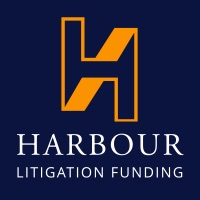16 July, 2018
Competition law was established as early as the Roman Empire and has continued to evolve ever since.
With companies becoming more global, developments in this area of law are closely monitored by businesses and consumers worldwide.
Mature jurisdictions such as the US and EU have well entrenched anti-trust or competition laws. Reforms in emerging jurisdictions have been prevalent – take the recent competition law developments in South East Asia, for example. But will they bring the desired impact?
CFA and ATE
An alternative funding option is Conditional Fee Arrangement (CFA), coupled with After The Event (ATE) insurance.
This option enables a claimant to share the costs risk of a competition action with its lawyers. The lawyers may act on a ‘no win-no fee’ basis, or ‘no win-low fee’ basis. Typically, the claimant will pay for the ATE insurance to cover, predominantly, the adverse costs risk if the action is unsuccessful.
The definition of ‘win’ or ‘success’ under a CFA is a matter for negotiation between the claimant and its lawyers. A CFA has two key elements, which will only trigger if the action meets the CFA’s de nition of success:
The first element is the uplift, which is payment of any fees the lawyers have risked i.e. not billed to the claimant throughout the action. For example, the lawyers bill the claimant 50% of their fees throughout the action, and on success receive an uplift of the remaining 50%.
The second is the success fee. This is a defined fee payable in addition to the uplift. The success fee can be up to 100% of the lawyers’ standard fees, but it cannot be a percentage of the level of damages awarded to, or agreed in settlement by, the claimant.
It is worth noting that it is possible to de ne ‘success’ such that the uplift and success fee trigger even when no damages are recovered by the claimant in the action. Also, the uplift and success fee were previously recoverable from the losing party in the action, but that is no longer the case.
Damages Based Agreement (DBA)
Such agreements entitle lawyers to be paid an agreed percentage of any damages recovered in an action by a claimant. For UK competition actions, the DBA percentage is capped at a maximum of 50%.
The UK regulations which govern DBAs have been the subject of much controversy, due to a perceived lack of certainty/clarity in their drafting. In particular, a strict interpretation of the regulations appears to preclude lawyers from acting on a ’no win, low fee’ basis. Many lawyers lack the appetite or capacity to enter into ’no win, no fee’ DBAs, especially in relation to complex and cost-intensive competition actions.
Some litigation funders have developed products which enable lawyers to, e ectively, enter into a ’no win, low fee’ DBA. However, continued uncertainty surrounding the regulations has meant that the general take-up for such products has been low.
Outside the UK, DBAs are commonly referred to as contingency fee agreements.
ATE
ATE insurance is a product commonly used to cover the risk of losing an action and having to pay the opponent’s costs.
A claimant, guided by its lawyers, will estimate its likely exposure to the opponent’s legal costs in an action. The claimant will then purchase ATE insurance at a level equivalent to that estimate, and if the action is unsuccessful, the insurance will pay out at that level.
The ATE insurance premium can either be paid for up front, or in stages as the action progresses. Some insurers will even offer deferred contingent premiums, which are only payable out of damages recovered by the claimant in a successful action.
Litigation funding
Litigation funding is now a widely accepted part of the litigation and arbitration landscape in the UK and in many other jurisdictions. Funders are typically asked to pay all of the claimant’s legal costs associated with pursuing an action, as well as to indemnify the claimant for any adverse costs. It is non-recourse, in that a funder is only paid if the action is successful and damages are recovered. A funder is paid an agreed portion of the claimant’s damages and never more than the total amount of damages recovered.
Funding has moved from its early days of financing impecunious claimants, otherwise unable to secure access to justice, to nancing well-resourced corporates. Such corporates are attracted to the litigation funding option because of its risk- management qualities – a corporate can pursue an action either partially or fully ’off balance sheet’.
Funding is prevalent in competition damages actions, especially group actions, because the complexity and costs-intensity of such actions can deter even the largest corporates from self- funding.
What funding will cover depends on the funder. Typically, it will be a matter of what the claimant requires. By way of example, a funder can cover some or all of the following:
- The costs of an initial investigation and due diligence
- Own-side legal costs and disbursements once the action is on foot
- Adverse costs
- Historic legal costs (incurred before the funder’s involvement)
- Maintenance costs for the claimant
Funding can be sought at any stage, although many funders will decline to consider an action where trial Fornal hearing is imminent. This is mainly for practical reasons – there is insufficient time for the funder to conduct thorough due diligence and to finalise the funding arrangements.
For competition actions, it is typical for a funder to be involved at an early stage, before proceedings are issued. This is due to the aforementioned complexity and costs-intensity of such actions, which can deter even the largest corporates from participation unless there is a third-party funding option available.
Options combined
A claimant may opt for a combination of the above options. They are not mutually exclusive.
For example, a claimant could opt to self-fund all the legal costs of a competition action but may decide that the ATE premium is too expensive, and approach a funder to gauge whether they would be willing to finance the ATE cost. Alternatively, a claimant may agree for a funder to pay all legal costs but decide to self-fund the ATE premium.
Lawyers are increasingly asked to take costs risk in running disputes, including competition actions, with fees collected only if there is a successful outcome. A lawyer and its client can enter into a risk sharing agreement, with the lawyer foregoing all or part of its fees. With the client’s full knowledge and consent, the lawyer can then enter into an agreement with a funder to provide funding for certain costs of the action.
The funder pays a proportion of the lawyer’s fees and typically covers disbursements in addition, such as the cost of counsel and experts.
With such an arrangement, any damages recovered can be divided between the lawyer and funder, typically in proportion to the respective nancial risk taken i.e. costs paid by the funder and fees at risk/unbilled by the lawyer.
It can be helpful to a funder if a lawyer is willing to take risk on an action, because it often signals that the action has good prospects of success. In fact, some funders insist that the lawyer take risk before they commit to a funding arrangement. However, it is important to note that not all funders require this.
By Stephen O’Dowd, Senior Director of Litigation Funding, Harbour
For further information, please contact:
Ruth Stackpool-Moore, Director of Litigation Funding / Head of Harbour Hong Kong
ruth.sm@harbourlf.com

.jpg)





